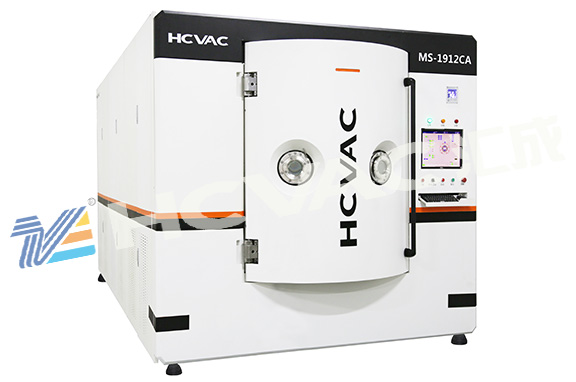Pvd Coating Machine TiO2 film photoconductivity and photocatalysis, different series of TiO2 film samples (F doping concentration, holding time, film thickness, crystal form) were spin coated on quartz substrate by sol-gel method, and the structure and other properties of the samples were characterized by X-ray diffraction and other analytical testing methods. The photocatalytic performance of the film sample was characterized by the experimental determination of photodegradation of Methylene blue solution, and its photoconductivity was measured. The research results found that samples with higher photoconductivity values have better photocatalytic performance, indicating an inherent relationship between photoconductivity and photocatalytic performance, providing experimental basis for characterizing photocatalysis using physical methods. After analysis, it was found that both photocatalytic activity and photoconductivity have the optimal doping concentration of F (2%) and the optimal film thickness (331 5 nm), the larger the grain size is, the better the photocatalysis and photoconductivity are. The Anatase Rutile mixed crystal is better than the single Anatase phase.

Since Fujishima discovered the phenomenon of photolysis of water on TiO2 semiconductor single crystal electrodes in 1972, research on multiphase semiconductor photocatalysis has begun. Photocatalytic degradation belongs to complex photochemical reactions, and there are many factors that affect the degradation characteristics, such as light wavelength, light intensity, temperature, pH, etc. The experiments are also relatively cumbersome, and there is still no unified and widely applicable standard for evaluating the photocatalytic activity of TiO2.
In recent years, researchers have begun to attempt various physical methods such as surface photovoltage, bright dark conductivity ratio, and bright and dark conductivity to study and characterize photocatalytic performance, hoping to obtain simpler methods for evaluating photocatalytic performance. TiO2 is a high resistance semiconductor with low dark conductivity, which is often obtained by measuring micro current. The measurement of micro current is easily affected by the measurement accuracy of the instrument and external noise, which reduces the credibility of the measurement results; The use of the bright dark conductivity ratio method is affected by the measurement error of dark conductivity.
At present, the preparation methods of TiO2 thin films include sol gel method, Atomic layer deposition method, vapor deposition method, sputtering method and low-temperature plasma jet method, among which the sol gel method has been widely used because of its simple process and low cost. In this paper, photocatalysis was characterized by photoconductivity method, and TiO2 films under different conditions were prepared on quartz substrates by sol-gel method. Methylene blue was used as the degradation object to study the photocatalytic performance of the films, and their photoconductivity was measured; In order to accurately compare the photocatalytic performance of various products, it is necessary to maintain consistent conditions such as light intensity and temperature during the experimental process, in order to minimize the external impact of photodegradation. The TiO2 thin film samples used for photocatalytic research in this experiment mainly have differences in doping concentration, holding time, film thickness, crystal form, etc. The effects of various conditions on photocatalysis and photoconductivity were analyzed from the Characterization test of different samples to understand the relationship between photocatalysis and photoconductivity more comprehensively.
When it comes to introducing the photoconductivity and photocatalysis of TiO2 thin films in
Pvd Coating Machine, it is relatively theoretical. For those who have not studied this aspect deeply, it may feel quite difficult and difficult to understand, but it's okay. Read and read more, and gradually you will get better.



